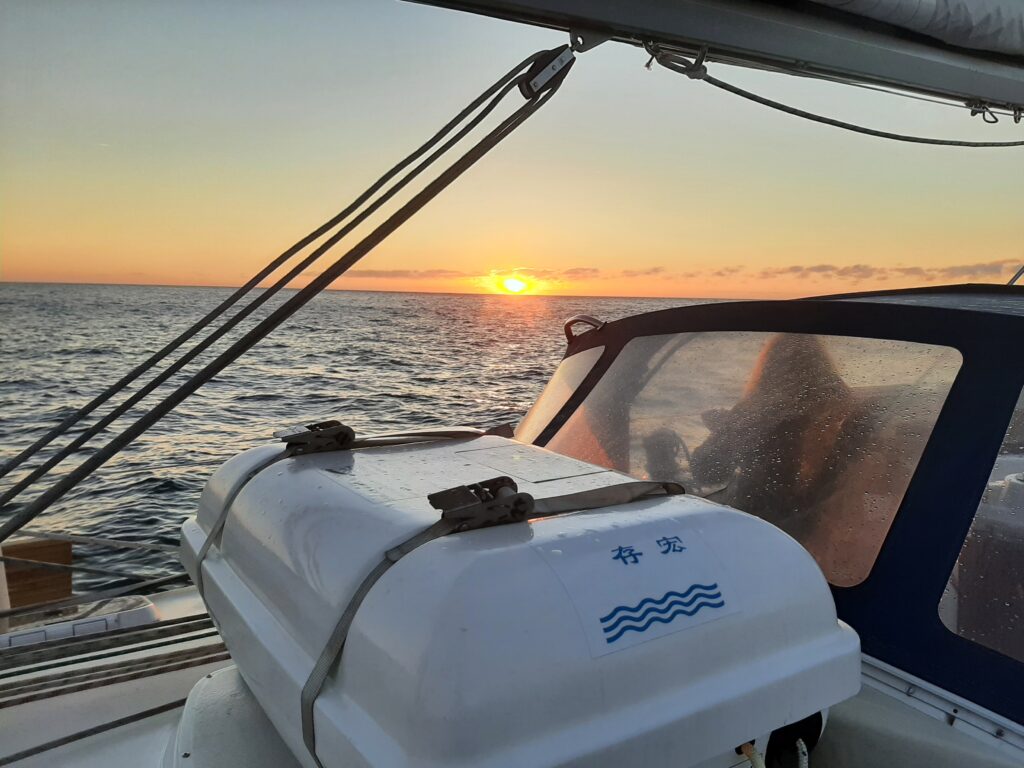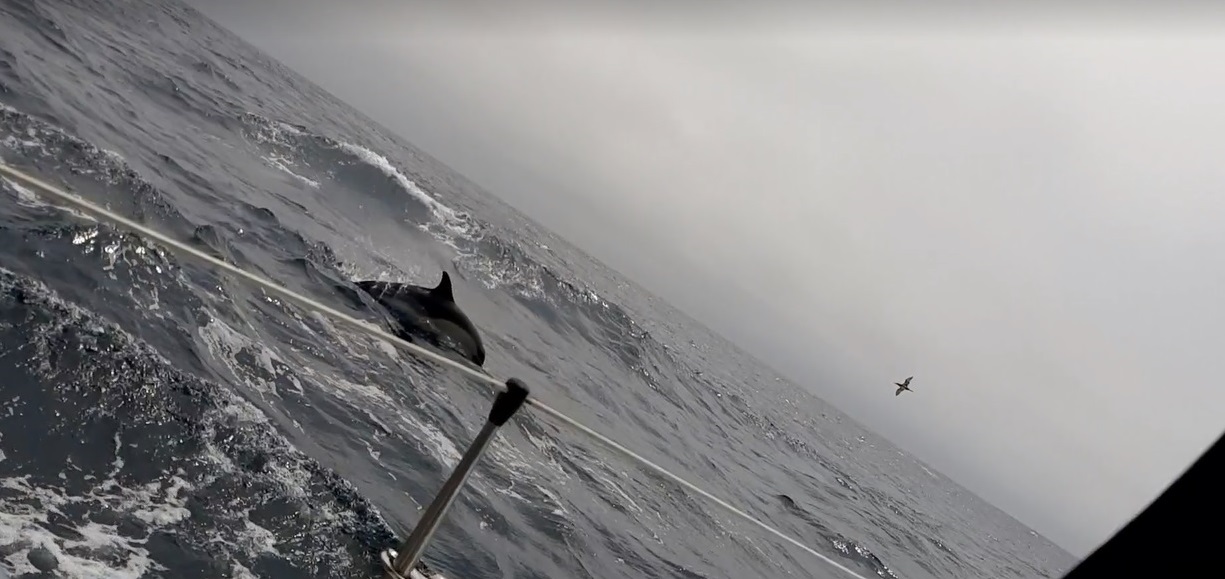Well, the Bay of Biscay. Famous and infamous among seafarers. The weather can change quickly and because the bottom of the Atlantic Ocean rises in a short distance from a few kilometers deep to less than 150 meters (the continental shelf), the ocean swell can rise to dangerously steep waves. It is therefore wise to undertake the crossing preferably with a good multi-day weather forecast. For us also our first major crossing, 350 miles non-stop from Camaret to A Coruña. At an average of 5 knots, that means 70 hours of sailing. So we were both eager and anxious…
As mentioned, we left Camaret on Tuesday 13 July at 8 am. In time to be with the current and then to be (past) the Pointe du Raz before the turning of the tide. A place where you at least don’t want to run into any current against you: just like the “channel du Four”, the current can also rise considerably here and then it becomes a long ride to get through…. We had calculated such that we didn’t have to leave ridiculously early but would still be on time not to encounter any current against us.
The wind was northwest so we first had to beat against the wind out of the bay of Camaret with wind force 5 against. That doesn’t make much progress with rough seas, so we kept the engine running for a while. After rounding the cape to the Chenal du Toulinguet, it then goes pretty fast to the south. We eventually made it to Pointe du Raz in plenty of time so that we still had quite a bit of current with us and once again clocked a nice top speed of about 10 knots over ground. We took it for granted that the circumstances had a side effect on the stomach contents of one of the crew….
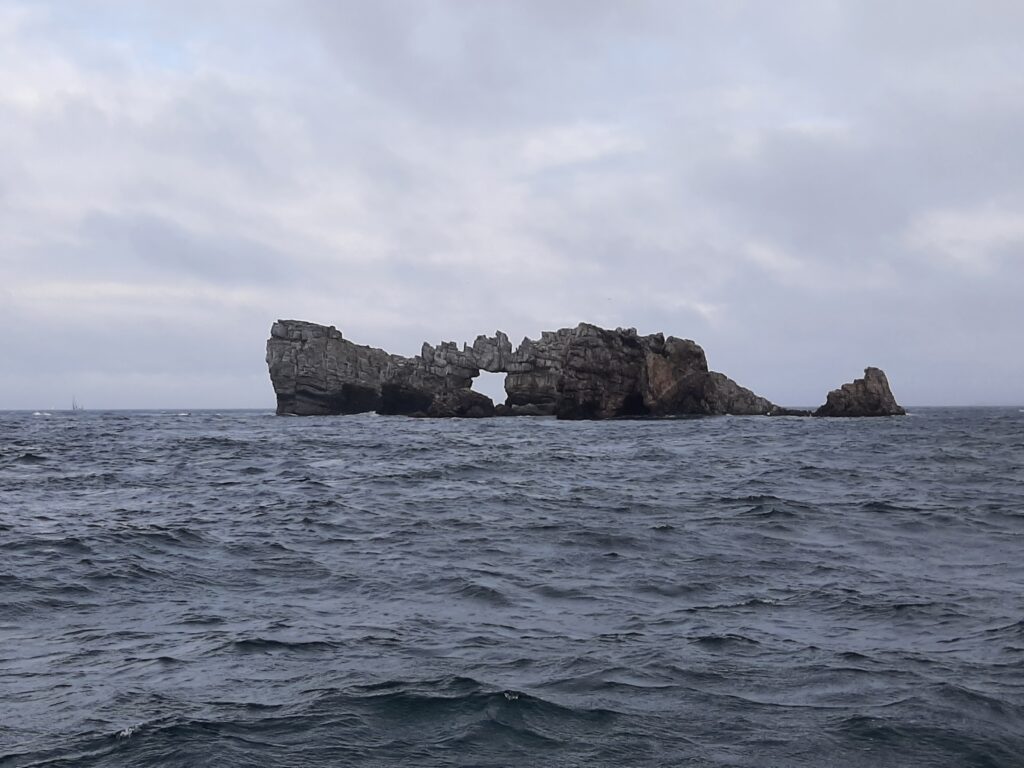
Soon the land disappears from sight and if the mobile connection also falls, you know that it has started. A bit of a shame that the promised sunshine failed and it remained gray and drab. That was also true for the next day. The encounter with the Idéfix was funny. That was one of those solo sailors who doesn’t shrink from anything. He was doing a solo tour around Ireland from les Sables-d’Olonne on a Mini Transat 650. A boat of less than 7 meters (for our relatives: a kind of “Sheriff”). And that only as qualification to make enough miles to later participate in the real races such as a round of the Azores and a transatlantic crossing, all in the same nutshell that by the way, does go a bit faster than us. When contacting the VHF radio he reported: “Yes, I am alone but I am awake”. After this reassuring announcement, I confirmed that we were also awake, so that it would be possible to avoid a collision.
The wind decreases somewhat in the course of the evening and we furl in the jib and unfurl the genoa and sail into the evening. The sea is also calmer. After having eaten something I try to get some sleep but of course that only works half way. I am out of the berth again before it gets dark. We see it get dark together and then No goes to bed and I go into the night. There is hardly any moon, it is also behind the clouds and not much later it sets completely. Then it gets really dark and you hardly see anything around you. What you do see very well are the luminous algae that “turn on” when the water is disturbed by the boat. That really looks beautiful. But it gets really spectacular when dolphins appear. Not that you can see them that well yourself, but they also disturb the water and leave a trail of light behind. That looks a bit like a torpedo shooting through the water, such a light path. And this happens right next to your boat where they also regularly dive under the boat or come above the water for a jump or to breathe (with a clear “KAPFUUU” when air goes out or into their windpipe). All in all, an almost hallucinatory experience, all those emerging light trails behind, next to, under and in front of the boat that I watched with my mouth open for quite some time.
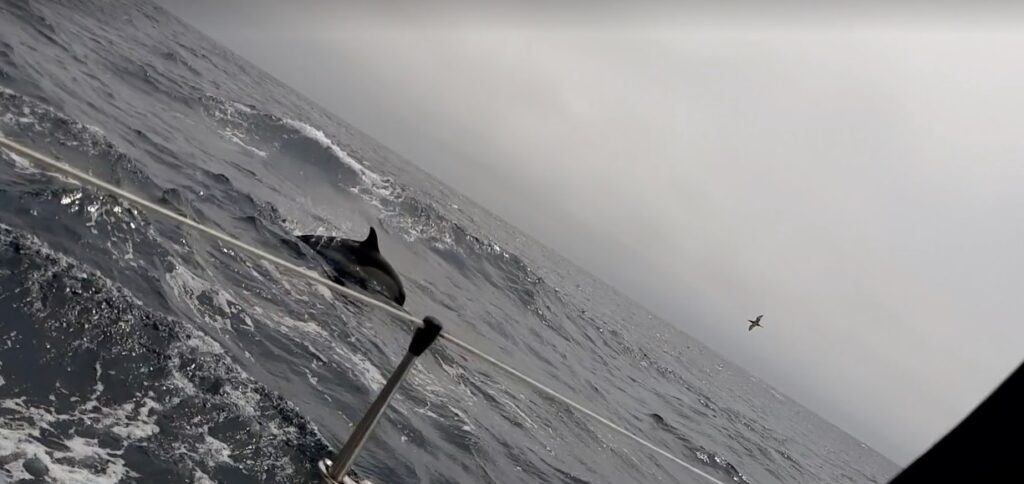
The night watch itself was not too bad for me. Fully dressed (it was still a bad summer) I could take 20 minute naps outside in the cockpit and then look around again. Around this time we also passed the transition to the continental shelf (max 150 meters deep), to the multiple kilometers deep ocean floor. Something that did not leave our depth sounder untouched. He got so confused by this that he blinked for the rest of the crossing and indicated depths between 1.5 and 6 meters….. All in all the night went well and No came out of the berth at dawn so we could experience together that it became light again. Then I went back to the berth, but was out of it again after an hour and a half. I could not (needed not?) sleep anymore. The wind had decreased a bit and so the reef could go out. At the beginning of the afternoon the wind had decreased so much that we even put the gennaker instead of the genoa. The wind also turned a little further north. At the end of the afternoon the wind increased again and turned a little further: the gennaker went off again, the genoa was out to windward and like this we sailed into the night with the same watch pattern as the first night. Unfortunately also the same temperature, the same lack of moon or other light, and unfortunately no dolphins this night to keep me company.
On Thursday the contemplating started: how far is it, what time will we arrive, do we dare to arrive at night in an unknown bay/harbor, or do we have to slow down to arrive at the morning light. We knew there would be a strong east/north-east wind around the north-west cape of Spain. Not really a pleasant prospect to have to sail through at night. But given the progress we had made, we thought it might also be feasible to enter the bay of Coruña while it was still light. So the decision was made, no delay tactics but full throttle to Coruña.
At about half past two the signal came: “land-in-sight!”. That was a beautiful moment. Not long after, mobile coverage again, so we could report that we were still alive and “almost” there. So, that was hopeful. Not long after, it turned out that the predicted high winds would actually come: the wind picked up and the waves started to build up. That only went a bit further than we had hoped. In the end we clocked 30 knots on the anemometer. That was the apparent wind that came from behind: all in all a real wind force 7. By then we had double reef in the mainsail and jib instead of the genoa. The wind was one thing, the waves the second and they were really annoying. High, steep waves coming in from behind. High and steep enough to lift Pantera’s stern with the bow sometimes poking into the wave trough. The windvane steering gear had meanwhile thrown in the towel and forced us to steer ourselves. It took a lot of effort to keep the boat on course and Pantera was regularly thrown aside by one those high, steep waves. The mainsail was now completely removed, it was more of a hinder than a help, and the jib was plenty on this downwind course. By the way, it was also a nice experience: if the boat did remain straight, to thunder off those waves while surfing (Later it turned out that the rudder had had a hard time and may have been a bit dismayed: steering to starboard now produces quite a lot of resistance so that should be looked at). I didn’t have time to take a picture or video of all this. Sorry about that, but I had my hands full for a while.
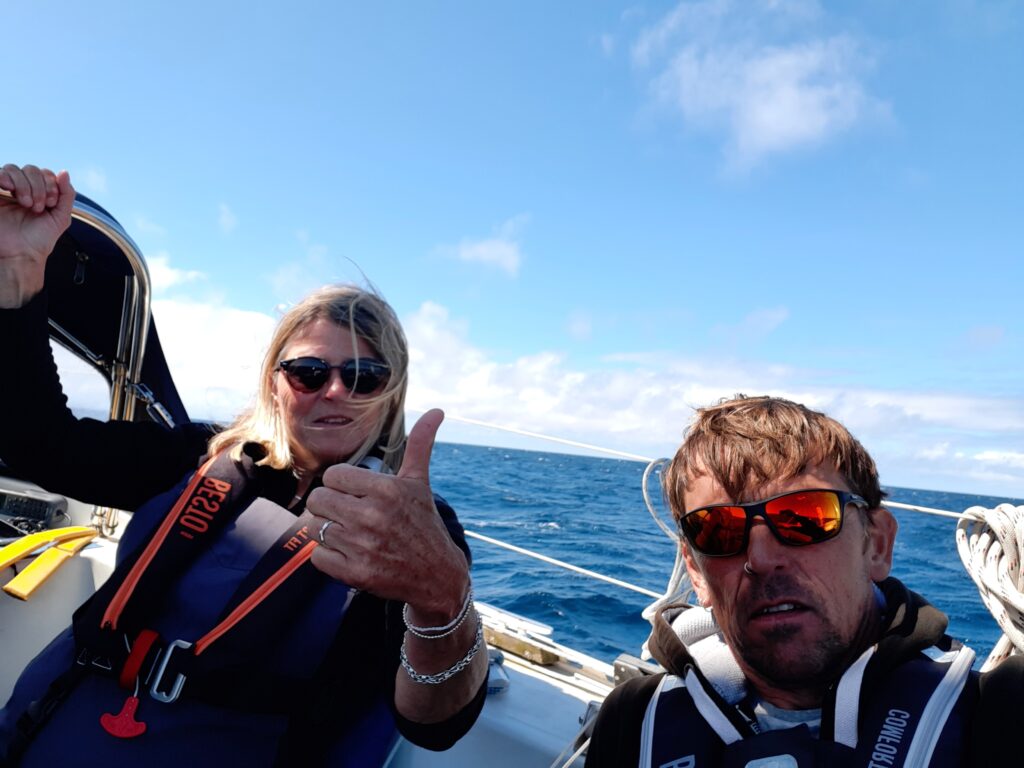
All in all, we didn’t feel like going into the night with these conditions in the direction of Coruña, where we might also have to steer everything ourselves. So the plan was changed: instead of Coruña we wanted to enter a bay closer by where we could spend the night at anchor and then the next day the last 25 miles to Coruña. So the course has shifted towards the coast. A bit curious how restless that anchor bay would be given the circumstances, but that concern turned out to be unfounded: once we landed just below the coast, the wind almost completely disappeared. One mile back wind force 7, here wind force 1. Weird sensation. With a little luck we should be able to reach the bay before dark to drop anchor, were it not for the fact that we were now barely making any headway. So: engine on! Key in, give it a little throttle, turn the key and ….. nothing! No click, no light, no tick, nada, nothing. It figures, the moment you just about had it, and you really long for that “beer-on-arrival” for which you really need the engine to enter that bay instead of drifting past it, the engine just leaves you to it. So, quickly into the engine compartment with the multi-meter. The voltage to the control panel is there, the control panel outside in the cockpit is unscrewed and voilá: a broken corroded cable shows why there is no juice for the ignition key. That can then be fixed temporarily fairly quickly. As a consolation, some dolphins came next to the boat again…..
Once the engine is running again, we can sail into the bay at sunset, drop anchor, and still have a few arrival beer(s) before we rolled into our bunks “tired but satisfied” as they say. We actually crossed Biscay….
